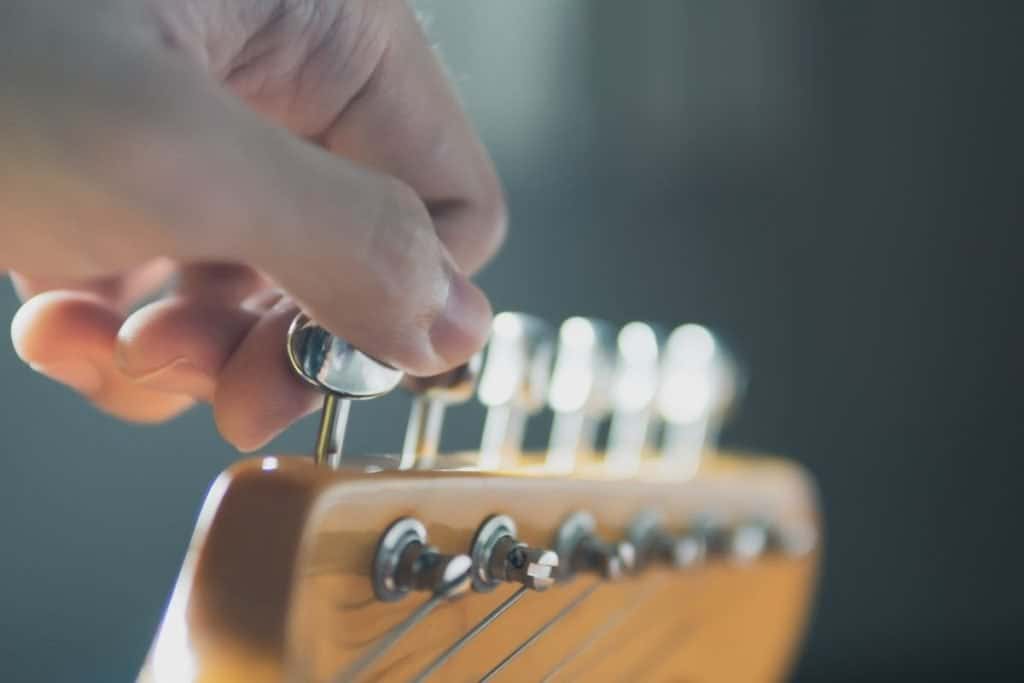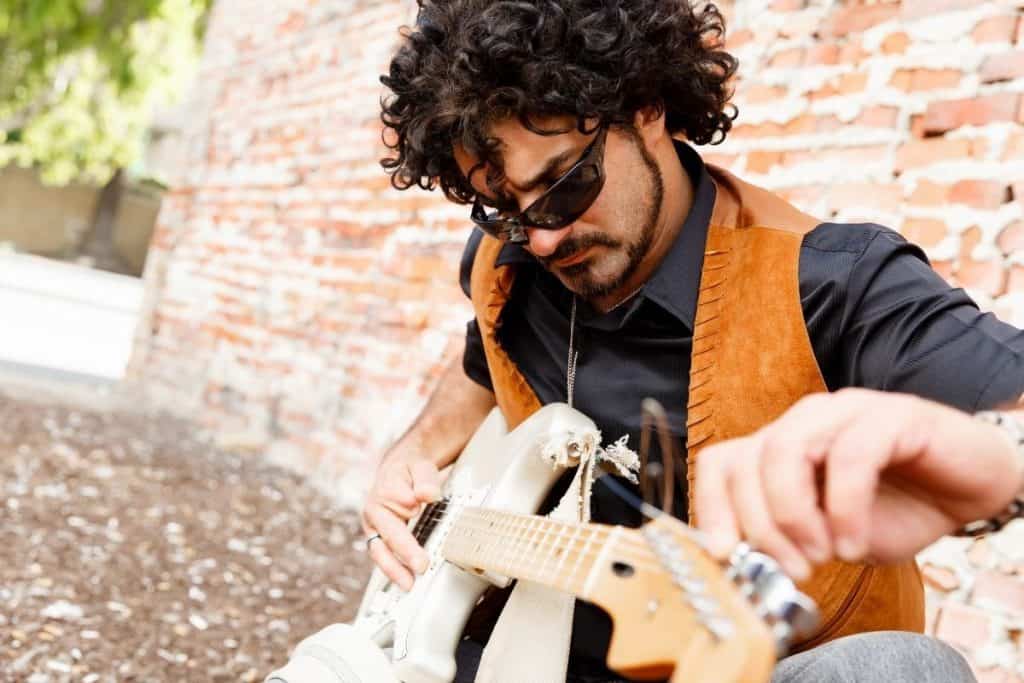There’s nothing worse for a new guitarist than picking a cool new song to learn, but seeing that it’s tuned down half a step.

Tuning is a skill that takes a lot of practice to get good at, and you might not be able to do it as easily as someone who has a lot of experience with a guitar.
This means that you’re going to have to fiddle around with your instrument to try and get it to sound just right.
But it’s a vital part of learning to play properly and tuning your guitar down half a step is going to give it a much richer tone that sounds great when paired with the right song!
If you’re struggling to work out how to tune your guitar down half a step, then you’ve come to the right place!
In this article we’re going to give you an extensive guide that will help you understand how to do this, taking into account some of the basics in case you’re not accustomed to them.
Method 1: Using An Electric Tuner
In the modern-day electric tuners are reliable and easy to come by. You can purchase one at almost any music store, and there’s a good chance that your guitar came paired with one.
If you don’t have one at hand, there are a lot of great tuning apps that you can download on your phone, and even websites you can access via a browser that will help you to do this.
- If you have a standard electric tuner, clip it to the head of your guitar and turn it on.
- Begin with your low E. When in standard tuning, you’re going to want to play the note and twist the machine heads up or down until you get it to read E. But here we are going to tune it down to either Eb or D#, depending on the requirements of the song you’re looking to play.
- Next up is your A string. Instead of A, we’re going to tune it to Ab or G#. An important note here as you go down the strings is to make sure you’re not twisting the strings too much. Take your time. If your guitar is already in tune then it’s likely you won’t have to alter the machine head too much to get the desired note.
- Next we’re going to want to go down to the D string and tune it down to Db or C#. Make sure you keep a close eye on your electric tuner.
- G string next, and it needs to be tuned to either Gb or F#.
- Your B string needs to be tuned down to either Bb or A#.
- The final string on our list is the High E string. This needs to be tuned down until your electric tuner reads either Eb or D#.
- Finally, you’re going to want to recheck each string to make sure that your guitar has been properly tuned down. Give your instrument a strum. Does it sound like it’s in tune? Knowing this by ear takes some practice to recognize, but you should be able to tell.
If you’re not sure, check each string with your electric tuner and make sure that they are all tuned down to the corresponding notes mentioned above.
Method 2: Tuning By Ear

In this section, we’re going to give you a brief overview of how you can tune by ear. If you’re new to guitar or music in general, you’re probably not going to be able to tell right away how a half step sounds in relation to its base note.
But the basic principle is that you are tuning each string to a state that is in between the two standard notes.
This is represented within music with the words ‘Sharp’ and ‘Flat.’ Sharp is usually represented with a # symbol next to the note. Flat is usually represented with a lower case b.
So for example F Sharp becomes F#, and F Flat becomes Fb. Sharp means slightly higher than the standard note, whilst flat means slightly lower.
So how can you tune by ear without an electric tuner? Well, there are a few ways to get good at this. You’re going to need to learn to recognize what the notes sound like and how tuning up or down half a step alters them.
We recommend looking at recordings of these notes online and playing them often to get your ears used to them.
You can then play around with the machine heads on your guitar to replicate the half step alterations until each string sounds just right.
If you’re lucky enough to own a piano or keyboard, you can see this by playing one of the white keys and playing the black keys on either side of it, as these are the sharps and flats of that specific note.
If you have a friend that is a guitarist, you can get them to show you what the flats of these notes look like, and slowly learn to recognize them. Often tuning up or down from standard tuning requires tiny twists of the machine heads.
Final Thoughts
We hope that this guide has explained the basics of how to tune down to a half step. Tuning is one of the classic barriers that many guitarists face when learning their instruments.
Taking some time to understand tuning and how you can do it quickly and efficiently will make learning and performing much easier!
A master guitarist will be able to tell if they’re in tune just by playing a string – and working towards this goal is going to improve all aspects of your musicianship.
We wish you the best of luck in your guitar journey – happy playing!
References
Recent Posts
QuickTime is a vital app for many Mac users, and if you’ve recently bought a new microphone, you might wonder how to use it optimally. QuickTime cannot record audio content if it doesn’t have...
Every microphone leaves a unique signature on the quality of its output. If you’re a podcaster trying to melt your way into your audience’s hearts, a muddy, distorted recording won’t cut it....
